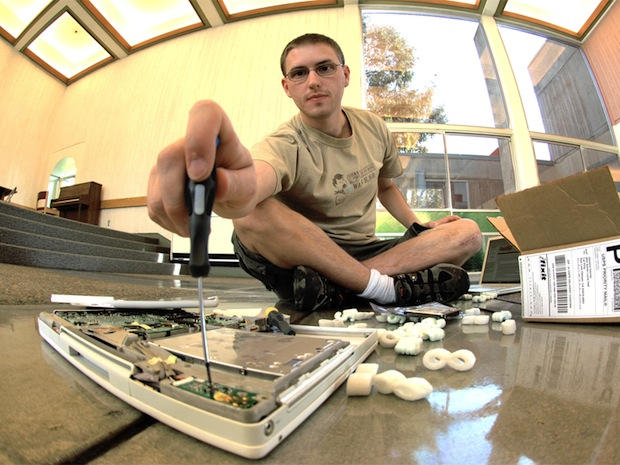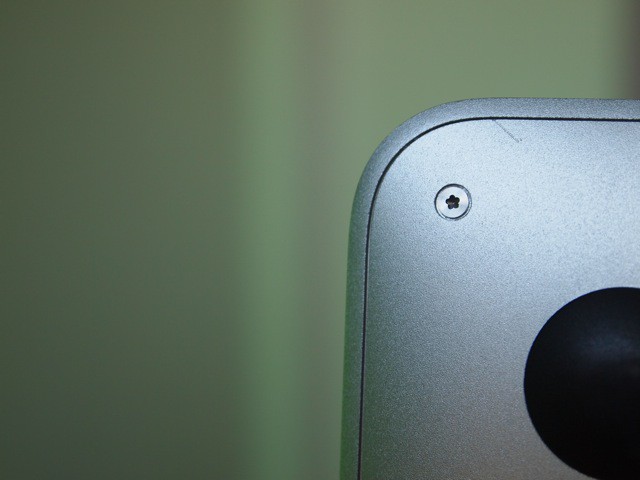Apple’s increasing use of tamper-resistant screws is a form of planned obsolescence, says one critic.
As previously reported, Apple is using proprietary five-point security screws in the iPhone 4 and new MacBooks Airs. The special screws were first used in the 2009 MacBook Pro to stop users from replacing the battery.
The screws are unique to Apple and serve one purpose only: to keep users out.
The plan, says iFixit CEO Kyle Wiens, is to force customers to upgrade their gadgets sooner than necessary. They also make them reliant on Apple for expensive repairs and upgrades.
“It’s a form of planned obsolescence,” says Wiens. “General Motors invented planned obsolescence in the 1920s. Apple is doing the same thing.”

Planned obsolescence is an industrial design strategy that encourages customers to upgrade their products sooner than necessary.
According to Wiens, the special screws prevent owners from upgrading or repairing their machines themselves. They also encourage users to replace their devices sooner than they would if they were more easily serviceable.
Apple releases new iPods and iPhones every year, and new MacBooks every couple of years. The company wants customers on a similar upgrade cycle, says Wiens.
“They want you on a 1- to 2-year purchase cycle for iPods, and a 2- to 3-year purchase cycle for laptops,” he explained.
Wiens notes that even Apple itself may be tossing rather than repairing devices. The replacement battery for an iPod Shuffle is $49 – the same as a new device. “That says to me they’re not servicing it,” he says. “They’re throwing it away and giving you a new one.”
Apple didn’t respond to a request for comment.
Apple’s new screws look like standard six-point Torx screws, but have only five points. They come in several sizes, and according to Wiens, are entirely unique to Apple. He can’t find suppliers of similar screws or the tools to work with them.
Apple’s service manuals refer to the screws as “Pentalobular.” They first appeared in the mid-2009 MacBook Pro to prevent users from replacing the battery. They are now used to secure the outer case of the current MacBook Air and the iPhone 4 (Apple is replacing the ordinary Philips-head screws that shipped with earlier iPhone 4 units).
Apple’s Diabolical Plan to Screw your iPhone from iFixit on Vimeo.
Of course, Wiens could be accused of having an agenda. He’s in the business of selling replacement parts: iFixit is the second largest supplier of Apple parts after Apple itself. It’s in Wien’s interest to have users fixing their own machines and ordering his parts. Indeed, iFixit just started selling a $9.95 kit to replace the iPhone 4’s Pentalobular screws.
But Wiens is a passionate fixer. He strongly believes in fixing things and not tossing them away. Last year, he helped publish the iFixit manifesto promoting a “repair revolution.”
Most products should not be disposed of, he says; even recycling is a waste. “It may be obsolete for you, but for someone else it’s cutting edge,” he says. “It should be good for another 20 years.”
But is Apple really trying to force customers into expensive repairs and short upgrade cycles? I’m not 100% convinced.
The policy is inconsistent. Apple doesn’t use tamper-proof screws across all its devices — only the consumer-focused gadgets are sealed shut (iPhone, iPod, iPad and MacBook Airs). Most of Apple’s pro- and prosumer products (MacBook, MacBook Pro, iMac and Mac Pro) are user upgradeable or serviceable. In fact, the Mac Pro is exceptionally upgradeable, featuring world-class industrial design that makes it very easy for owners to tinker with machine’s guts.
There may be warranty issues. Most electronics manufacturers use tamper-proof seals for warranty purposes. Warranties won’t be honored if the device has been opened and tampered with. Apple may be using tamper-proof screws in lieu of tamper-proof stickers.
Or perhaps there are other unanticipated issues. The first Macs, for example, famously required extra long Torx drivers to open them up. They were sealed partly to prevent users from tampering with the hardware, but also to stop them electrocuting themselves on the CRT.
And lastly, a lot of Apple customers are likely to replace their devices long before the need upgrades or repairs — or the sealed-in battery runs out. One person’s planned obsolescence is another’s rapid innovation.
What do you guys think? Is Apple forcing us to buy new products rather than repair or upgrade our old machines?


